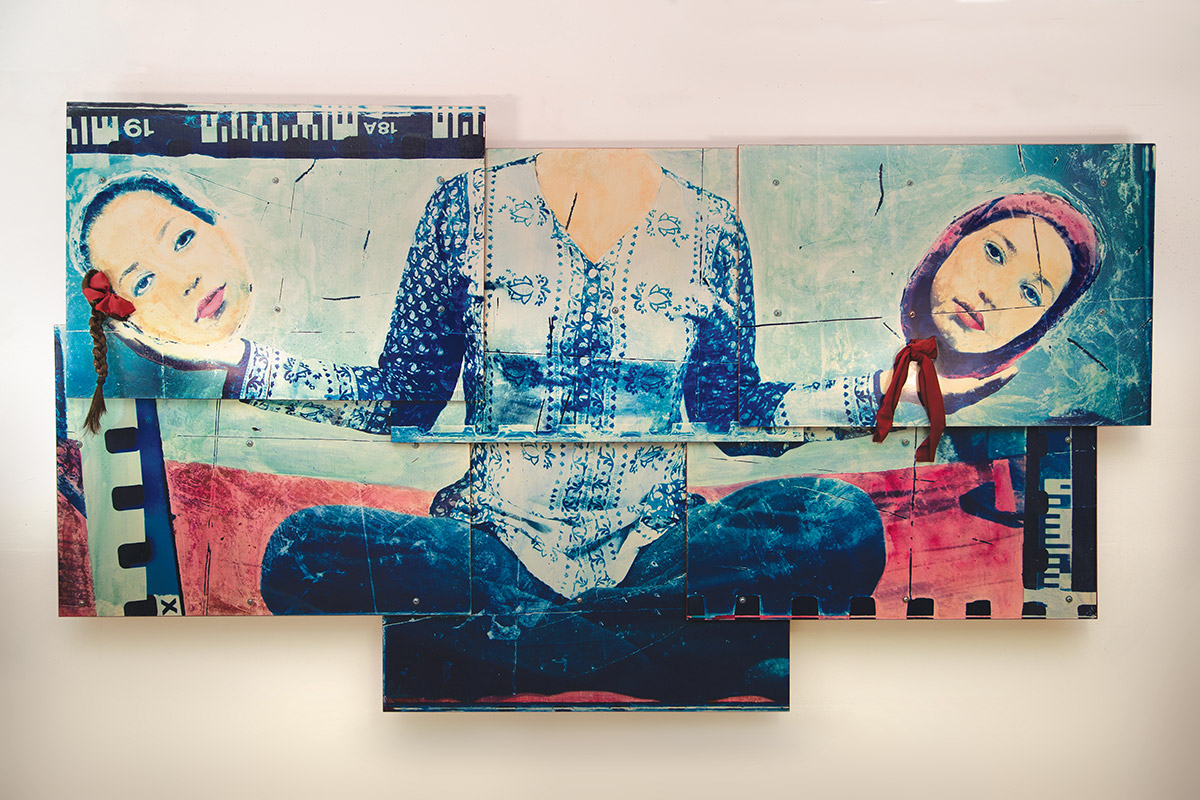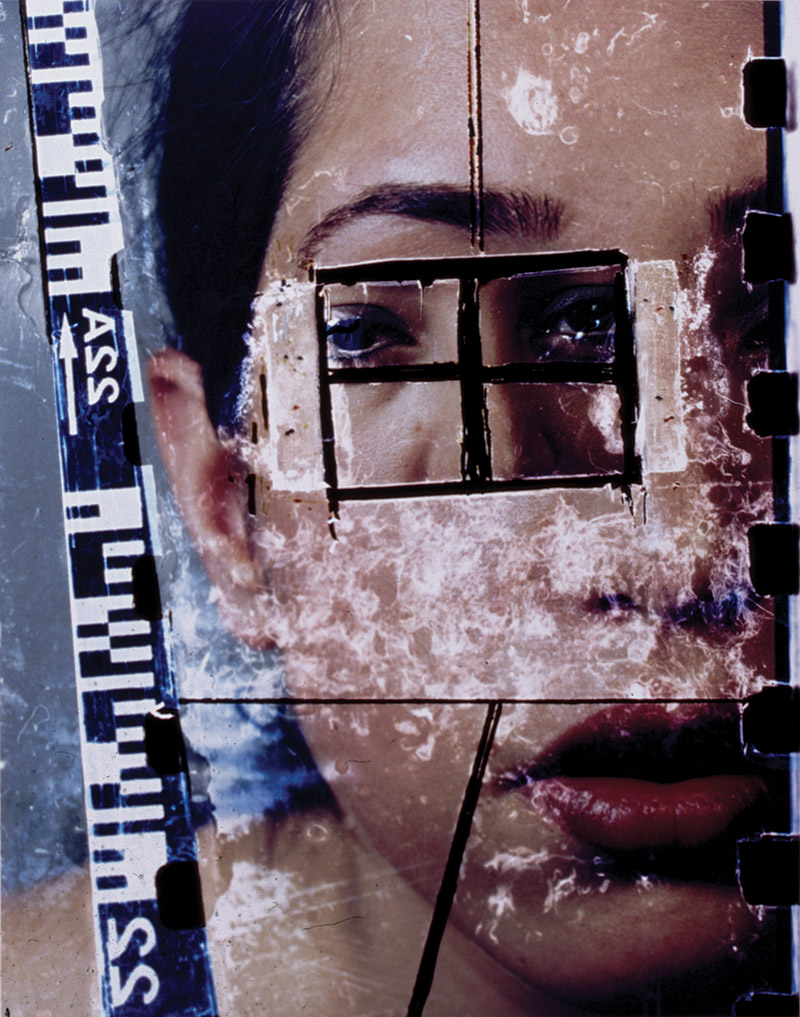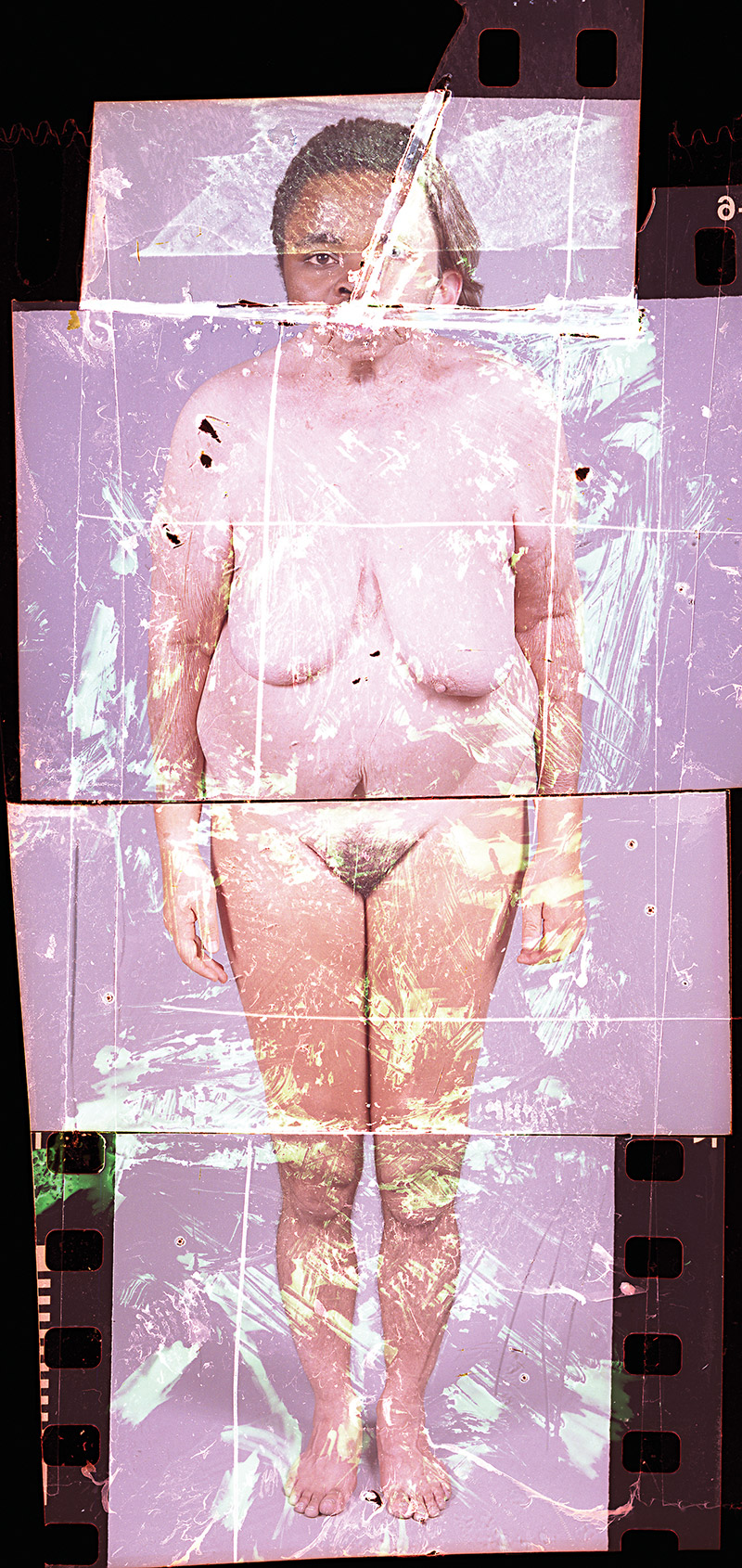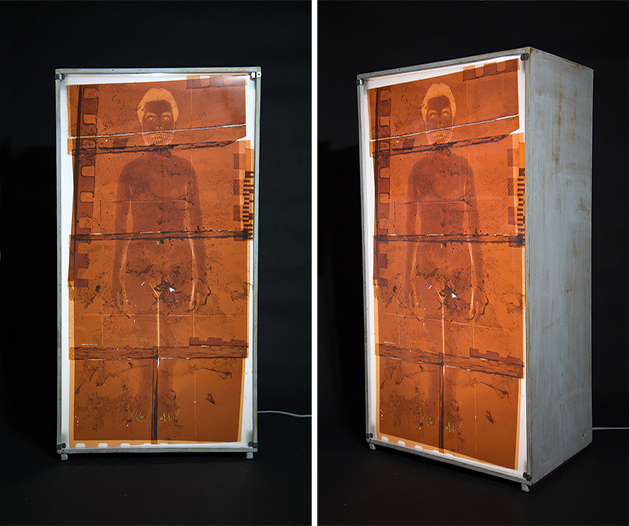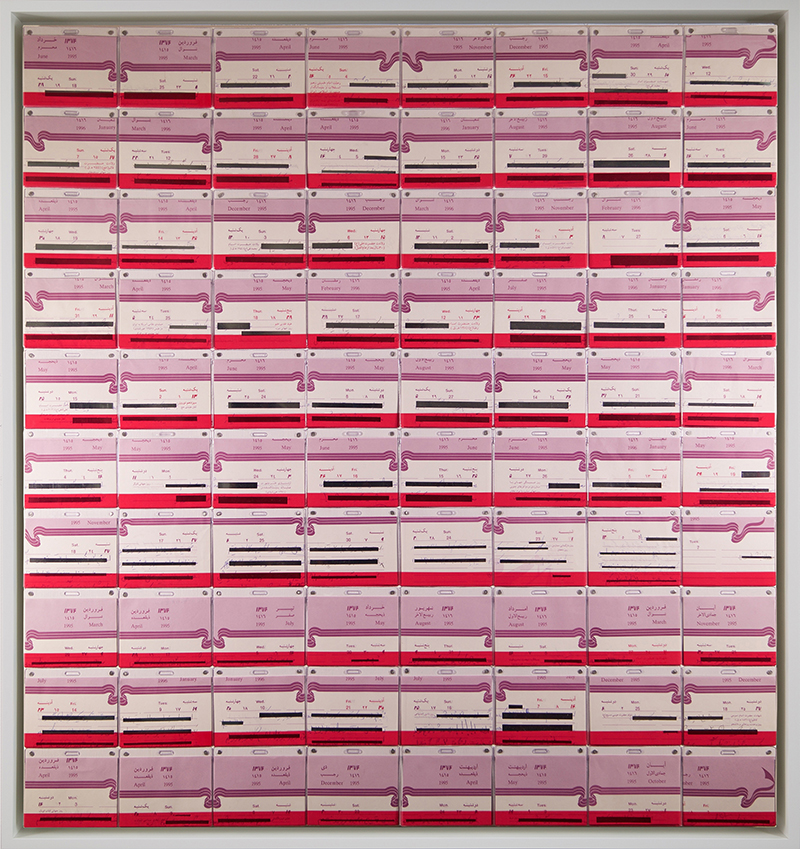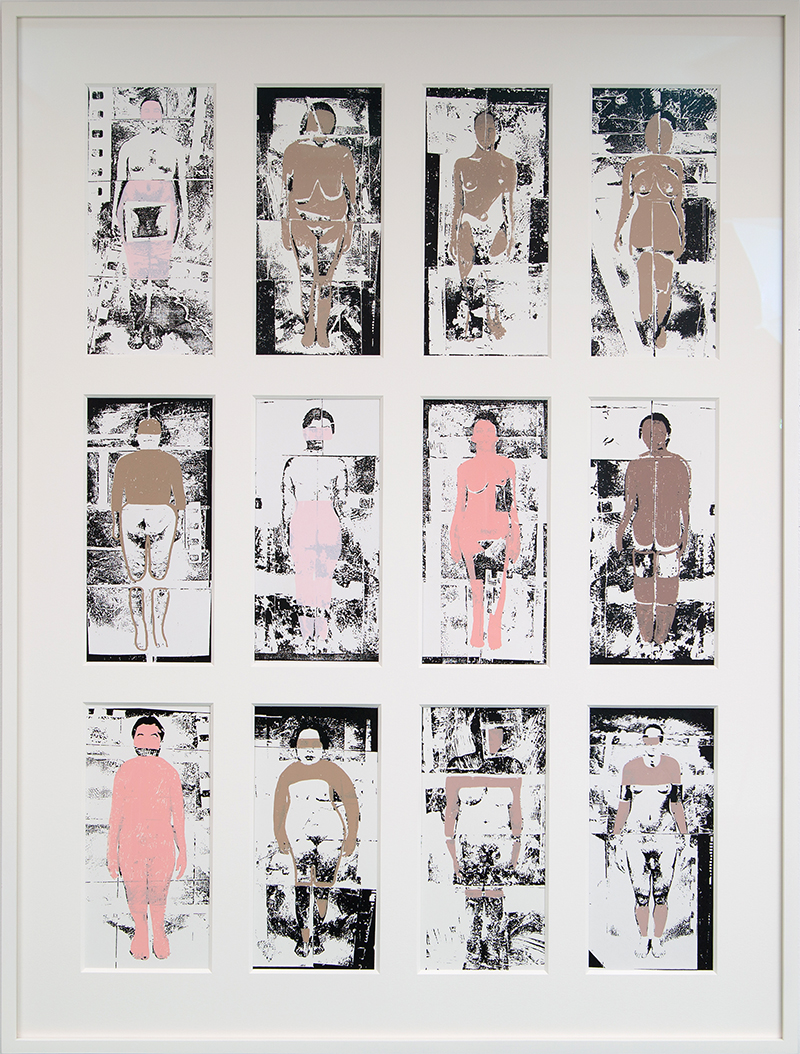Shadi Yousefian’s solo exhibition at The Space
By Christopher Ian Lutz @christopher_ian_lutz/
Shadi Yousefian’s solo exhibition at The Space
Los Angeles’ newest gallery The Space was initiated on October 8 with a solo exhibition for Shadi Yousefian. This fifteen year retrospective covers several complete series of multi-media artworks that essentially all explore identity. As a female artist who moved from Tehran to America as a teenager, the themes of identity in her art include a range of angles to perceive identity.
The timeline begins with the Self-Portraits (2002-2003). These photo collages were built from the photo negative. After thoroughly manipulating negatives through scratching, splicing, and cutting she then assembled them into a final form that became the photographic print in what she calls “negative collages”. This series extends into a 2003 sequel that includes The Talking Eye, Duality, and Social Identity, which are mounted on wood panels to create sculptural pieces.
In the Universal Identity series (2006) Shadi extends beyond self-reflection and pieces together general concepts of identity. Again following her methods for negative collages she printed life-size photographs of several individuals that ranged in sex, age, and ethnicity and then rearranged their various body parts to create a new person that was an agglomeration of each of these qualities that are generally used to identify, or categorize a person.
Examination (2006) continued exploring the construction of social identity. The series consists of sixteen lightboxes that serve as “X-rays”. Shadi builds on the same premises as Universal Identity but now we truly see the transparency of identity within the fabricated framework that encloses the sense of self, much as the very words and social constructs, such as gender, encases an individual’s perception of who or what they think they are.
Letters (2006-present) is one of three series that are perhaps the most personal to the artist. Every series is an intimate revelation of Shadi’s strengths and vulnerabilities, but Letters literally exposes personal affairs from her life. We get a sense of identity from a temporal plane by going into Shadi’s past and viewing her letters that she had received in correspondence with friends back in Iran. This was the pre-social media era. Of course, we don’t see the letters as they are. Shadi has cut them up and rearranged them in collages on wood panels. Since a person does not recall a memory as it is, but instead reconstructs the past through their memories, Letters is an abstract visual for the audience to construct an emotional impression of a time passed they never experienced.
Memories (2012-2014) is another series that incorporates personal ingredients from Shadi’s life. She uses normal photographs from photo albums and places them within fabric pouches or small plastic bags that are mounted on wood panels. Whereas a photo album often divides our memories through pages in a timeline, Shadi creates a visual composition that unites these memories into a single piece. This collective of the past is a construction of identity of the present.
Diaries (2017) is the third intimate set of works that uses Shadi’s diary pages that reach back as far as 1995. Following similar techniques as in Letters and Memories, Shadi deconstructed the pages by cutting out her writing, but maintained the overall page. She then set mirror film behind the cut-out parts, and then placed the page in a plastic sleeve. When the audience tries to read her diary they will find themselves facing their own reflection. Is this not what we are truly looking for when we analyze another person’s identity?
Identity Screening (2017) comes back full circle to the Universal Identity and Examination series by again addressing identity as a concept that is not fixed, but fluid. We try to frame our identity to be sure of ourselves, but in Shadi Yousefian’s body of artwork identity is revealed as a journey, not a destination. It is ever-evolving, changing, transforming. At times in a state of duality, other times in a state of unity. It is formed from the past, the present, and perhaps the future. Although it is generally the case that the individual conforms to the identity by deconstructing and constructing identity, Shadi shows that identity conforms to the individual.
Exhibition dates: Oct. 8–22, 2017
Hours: Tuesday–Saturday, 11 a.m. to 6 p.m.
Address: 924 S. San Pedro St., Los Angeles, CA, 90015


